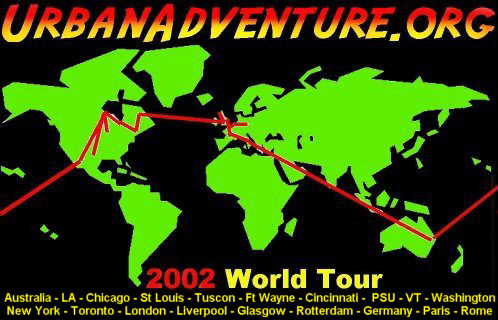But
does this information give you a true idea of what life would be like in a
city? I am sure that there are many other factors that are involved in determining
if people are happy or not. Certainly personal wealth would be one of those.
I once saw some graffiti in a drain that read; "If you think the system is
working, ask someone who is not." Life for the unemployed and those on the
poverty line is not as rosy and cheerful as life for those who are well off.
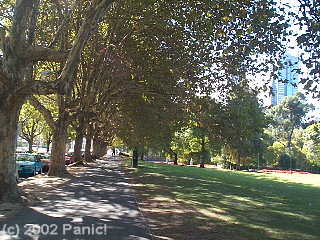
Public
land, trees and greenery
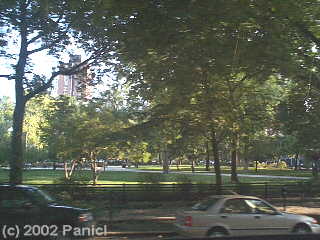 I
think another big factor is access to parks, and greenery. Life in a concrete
jungle can be a bit oppressive. While New York obviously has many more people
than Los Angeles, and a greater
population density there seemed to be a larger amount of parks in New
York that were easily accessible and green. The few parks I saw in Los Angles
were in need of water, were small, involved a lot of concrete in them and
had few water features such as lakes or ponds. In New York the parks were
set up for people to use. In Los Angeles the city seemed very devoid of real
trees. Where I did see them was on the campus of UCLA and in Santa Monica
and Beverly Hills. It worried me that real sizable trees seemed to be a luxury
in LA. In New York and cities in Europe and the UK trees were commonplace,
everywhere and green. Big trees grew along roads and in yards in Chicago,
New York, Cincinnati and Fort Wayne. LA, Detroit and Gary seemed to be lacking
these trees.
I
think another big factor is access to parks, and greenery. Life in a concrete
jungle can be a bit oppressive. While New York obviously has many more people
than Los Angeles, and a greater
population density there seemed to be a larger amount of parks in New
York that were easily accessible and green. The few parks I saw in Los Angles
were in need of water, were small, involved a lot of concrete in them and
had few water features such as lakes or ponds. In New York the parks were
set up for people to use. In Los Angeles the city seemed very devoid of real
trees. Where I did see them was on the campus of UCLA and in Santa Monica
and Beverly Hills. It worried me that real sizable trees seemed to be a luxury
in LA. In New York and cities in Europe and the UK trees were commonplace,
everywhere and green. Big trees grew along roads and in yards in Chicago,
New York, Cincinnati and Fort Wayne. LA, Detroit and Gary seemed to be lacking
these trees.
.
Urban
sprawl, high density housing and concrete
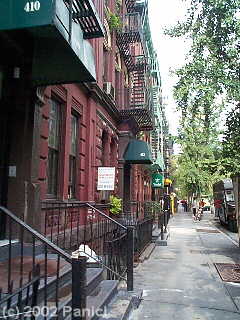 I
also found the predomination of concrete in some cities to be a factor in
how happy I felt there. Los Angeles is covered in small concrete and brick
lowrise apartments. These things are purely functional in design. There's
no attempt to make them look attractive. You can tell these things have been
built to a budget, with he aim of producing the greatest amount of housing
for the smallest amount of payment. The bricks for some reason tend to be
light shades of gray, like concrete. Gray and light pale yellow seem to be
the predominant colors.
I
also found the predomination of concrete in some cities to be a factor in
how happy I felt there. Los Angeles is covered in small concrete and brick
lowrise apartments. These things are purely functional in design. There's
no attempt to make them look attractive. You can tell these things have been
built to a budget, with he aim of producing the greatest amount of housing
for the smallest amount of payment. The bricks for some reason tend to be
light shades of gray, like concrete. Gray and light pale yellow seem to be
the predominant colors.
Both
Chicago and New York also have huge amounts of apartments and flats. Probably
far more than LA considering that LA has a lower population density. But these
places have character, and they didn't seem as crowded. The brickwork often
has different coloured bricks interspaced with other bricks to form patterns.
The buildings have an older look, a more lived in look. Hand railings on balconies
are often wooden instead of cheap mass produced metal hand rails. The most
common brick colour was a deep burnt red, almost brown. This seemed to harmonize
well with the deep luscious green of the many trees growing in streets and
small yards. These places had character, history. You could call an apartment
home. In LA, you had the idea a flat was just a temporary place people lived
till they got something better.
London
was another city that seemed to handle the millions of people well. This place
was a sprawl, but a good one. People lived typically in single or double story
houses here with their own yards. The English knew how to make good use of
space. There was street upon street of little houses, neatly trimmed hedges,
small patches of green yards, numerous large trees. There was so many big
mature trees in London that it has sometimes been called an urban forest.
Flats and apartments did exist, but they were not as common as I saw in the
United States. In the center of the city terrace houses three and four stories
existed, but there were also large areas of public land like Hyde Park, Regents
Park and others that the public could relax in.
Paris
is a city with millions as well. It handles the population somewhat differently
than most cities I have encountered. Apartments are the norm here. Buildings
that are often over a hundred years old line every street. Normally three
or four stories high these buildings are wall to wall along street fronts.
Often there is one or two apartments on every floor. Such buildings are everywhere
in Paris, even out in the outer suburbs. Yards don't seem to be common, open
space is at a premium. Parks exist, and there are plenty of trees along the
avenues, but personal and private yards are rare.
This
would probably explain one problem that plagues Paris, the large amount of
dog droppings over footpaths. With nowhere other than the street to walk their
dogs, Parisians see sixteen
tonnes of dog
droppings deposited on their streets every day.
Public
Transport.
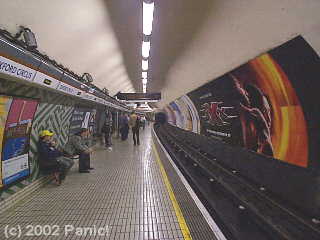 Weather
you are a tourist or a local, getting around is important. Transport for the
masses falls into either private or public transport. Every city of over half
a million needs public transport. This not only caters for local needs, but
also for people visiting the city who do not have their own private transport.
Some cities handle public transport better than others. London, Paris, New
York and Melbourne all have excellent public transport systems. Even small
towns like State College in Pennsylvania can have good public transport. Then
there are cities that struggle with public transport systems that are too
small, overcrowded or non existent. Thankfully for me, there are also cities
that build big public transport systems but can't afford to implement them
and leave them abandoned. Charleroi and Cincinnati both are good examples.
Weather
you are a tourist or a local, getting around is important. Transport for the
masses falls into either private or public transport. Every city of over half
a million needs public transport. This not only caters for local needs, but
also for people visiting the city who do not have their own private transport.
Some cities handle public transport better than others. London, Paris, New
York and Melbourne all have excellent public transport systems. Even small
towns like State College in Pennsylvania can have good public transport. Then
there are cities that struggle with public transport systems that are too
small, overcrowded or non existent. Thankfully for me, there are also cities
that build big public transport systems but can't afford to implement them
and leave them abandoned. Charleroi and Cincinnati both are good examples.
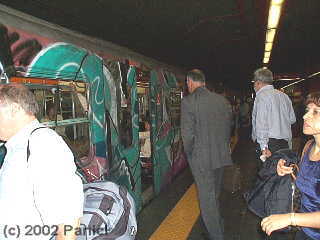 .
.
Rome has
a bit of a problem with public transport. There are just two rail lines in
the city, which has a population of about three million. Trams and busses
complement the trains but they don't seem to be enough. The trains are crowded,
and so are the busses. Trams seem to be interurban routes, although some do
run into the city center. It is obvious that Rome had a larger tram network
at one time, as there are street where the lines just end, and others where
track from points are truncated, not joining the main line. The underground
runs frequently, but it seems to always be crowded.
Considering
that Rome has such narrow, crowded streets, and many caldesacs it is surprising
that no effort has been put in place to extend the metro system with more
train lines. Busses struggle at times to make headway through the traffic.
Cost
of living.
One thing
I found very annoying and even insulting in Europe was the concept of having
to pay to go to the toilet. This is something unheard of in Australia. There
are numerous public toilets and even public showers that are free to use in
Australia. I was introduced to this concept in London, where toilets at Victoria
Station cost fifty P, or about a dollar and a half Australian. There were
some free toilets in Paris, mostly in shops and restaurants. Rome was particularly
bad for this. There weren't even toilets in the McDonalds, the only county
I've ever seen that had this. You often had to walk quite a distance to go
to the toilet, and then you had to pay to use it. By my third day in Rome
I was learning to visit the Vatican in the middle of the day as the toilets
there were free. I did observe some locals simply drop their pants and pee
on the floor of one McDonalds in protest.
Speaking
of McDonalds, I began to judge the price of things based on the cost of McDonalds
food. I hate McDonalds food, it tastes like crap, and looks much smaller than
the advertising would lead you to believe. But at least it is consistent.
I popped into many McDonalds simply to compare menus and prices with what
I have seen in Australia. I began to notice a strange trend that I shall call
the 'MMI', Makkers Meal Index.
I observed
that in Australia, a McDonalds Big Mack meal is $4.95 Australian for a standard
size meal at most places. In the United States a Big Mack Meal is also $4.95
without tax in most places. But these are US dollars. In Rome, the same meal
is worth 5 Euro. In London it costs Five pounds fifty pence. That's a staggering
$16.50 Australian. It's the same meal, it just costs different amounts depending
on the country you live in. Or does it?
While
in London there was a Tube strike. Drivers were striking on account of a wage
case and better conditions. It would have been a great day to explore abandoned
stations. In newspapers I discovered that the average Tube driver earned 31,000
Pounds a year. If you look at the exchange rate, that's about $94,000 Australian
dollars per year. That's in the top earners in Australia. Executives and managers
can expect to earn that sort of money as a middle wage. For some that's even
a top wage. So a London Tube driver earns more money than many Australian
executives and tertiary educated professionals.
But how
far does that money go? With food being so expensive in England (particularly
meat) and other costs of living being so high, 31,000 Pounds does not go a
long way. It is little wonder so many Australians go on working holidays to
England. It's the only way they can afford to stay there for any length of
time. The money a London Tube driver earns may be more in terms of exchange
rates than their Australian counterparts, but it has less spending power.
An Australian on $31,000 Austrlian in Australia probably has the same spending
power as the Englishman in England. The costs of food and other costs of living
in Australia are lower.
But before
everyone begins a mass migration to Australia, wages here are lower than overseas.
A typical suburban train driver in Australia would earn about $34,000, and
could afford to live a life only marginally more better off than their English
counterpart.
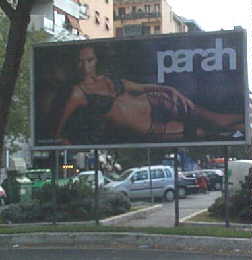 Cultureshock.
Things that were
different and weird overseas but not all that unusual.
Cultureshock.
Things that were
different and weird overseas but not all that unusual.
In
the United States, switches go up to go on. In Australia and Europe they go
down. Water taps in the US often use a combined lever type tap instead of
two separate taps. Sales tax. Sales tax is the dumbest thing ever implemented
in the United States. You go pick something off of the shelf, count your money,
figure you have just enough and the go pay for it. It's there that you find
out it costs more than the price on the shelf. Only you don't find out how
much more because the level of sales tax in each state is different and some
areas of a state have lower sales tax than others. Then there is redemption
tax. This is a tax on bottles and cans which you can get back some part of
when you return the bottles and cans. Once again this adds to the shelf price
and you only find out about it at the cash register. It
all adds up to a frustration for visitors to the US. You never seem to pay
what the advertised price for something is.
Advertising
in Rome. Now that was a real eye opener.
Comparison
of cities visited
Los
Angeles.
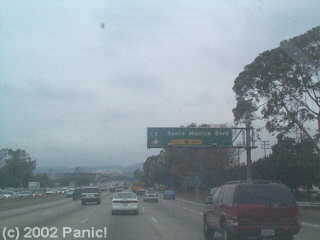 Los
Angeles is not a city I think Iíd want to live in. My overall opinion of Los
Angeles is that it is a little too dry, too crowded and not enough green.
The city is a city of contrasts. Thereís the seedier suburbs of Hawthorne,
Watts and Inglewood, and the up-market areas like Beverly Hills and Santa
Monica.
Los
Angeles is not a city I think Iíd want to live in. My overall opinion of Los
Angeles is that it is a little too dry, too crowded and not enough green.
The city is a city of contrasts. Thereís the seedier suburbs of Hawthorne,
Watts and Inglewood, and the up-market areas like Beverly Hills and Santa
Monica.
LA
is a crowded city. There is hundreds of thousands of houses with little garages,
concrete fences, narrow back lanes. Lots of dust and smog from cars. Dried
up little lawns, a feeling as though the place is about to burst. Apartment
blocks dominate. Little ones, big ones. Thereís lots of them. Itís the only
way to fit so many people into the city. I also suppose thereís always those
people who can never afford to rent a house.
But
there are houses, even nice houses. There are whole suburbs of them, and not
just the trendy ones. Donít get me wrong, thereís nice suburbia here. There
just does not seem to be enough of it. Crowding seems to be the norm. Yet,
what I see as crowding I expect many people might see as every day.
Transport
in LA is mad. Traffic on those freeways is crazy. They have interurban freeways.
Freeways designed to get you from one part of the city to the other. Iím used
to freeways that take you in to the city or out of it or maybe from inner
city to outer city. Here thereís freeways with exits at every major road they
cross. Six exits per suburb in some places. No wonder the traffic can slow
to a crawl. Everyoneís taking the freeway. What happened to good public transport?
I never even saw the trains, because they didnít service any of the areas
I went near to. There is just three lines. For a city with such a large population
public transport was abysmal. Busses crawl along above ground with the rest
of the traffic. I didnít see a single bus only lane.
I
only spent two days there, but apart from my excellent hosts, the city seemed
a bit seedy, and too dry.
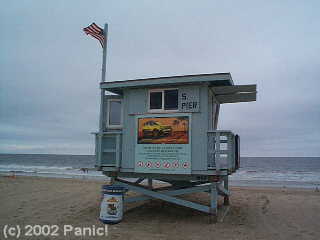
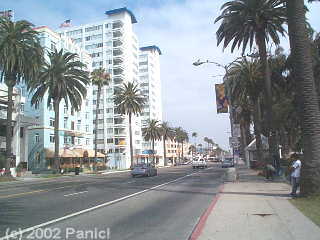
Chicago.
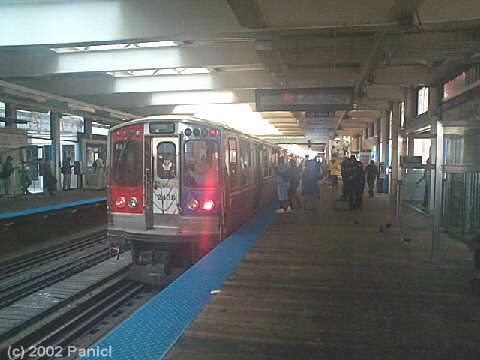 This
is a city I could easily live in. So green, so alive, so vibrant. Easy to
get around in, with excellent public transport, Chicago has buzz!
This
is a city I could easily live in. So green, so alive, so vibrant. Easy to
get around in, with excellent public transport, Chicago has buzz!
I
loved the big parks that I saw in Chicago. Wide open spaces that the public
could access. These were parks where kinds and adults alike could play, relax
or take time out. Most importantly, access was easy, the parks were situated
near the people, in the suburbs, by the lake, even close to the city center.
Kids didnít need to resort to vacant blocks to play. There were also open
squares in the center of the city.
The
suburbs of Chicago that I saw were more crowded than those back home, but
not overly so. People had back yards, trees, lawns, greenery. There was room
for off street parking. There were apartment blocks, but apart from those
down town they were not large, and did not seem crowded. These were not the
concrete dog box variety, but rather the older more stylish brick variety.
.
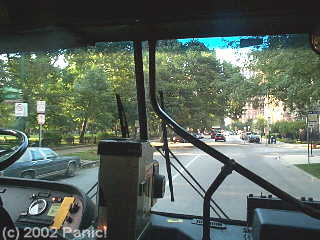 Public
transport in Chicago was good. While there wasnít a massive rail network,
it was large, frequent, clean and felt safe. Busses served areas where trains
were lacking. At the end of lines there were good bus and train interchanges.
There were express trains that bypasses local ones. It was all fast and efficient.
For a tourist it was easy to get around.
Public
transport in Chicago was good. While there wasnít a massive rail network,
it was large, frequent, clean and felt safe. Busses served areas where trains
were lacking. At the end of lines there were good bus and train interchanges.
There were express trains that bypasses local ones. It was all fast and efficient.
For a tourist it was easy to get around.
Chicago
night-life seemed more alive than LA. I really didnít see much nightlife in
LA. In Chicago the streets were crowded well into the evening. I got the feeling
these people were not wandering aimlessly looking for action, but they had
destinations in mind. They were going out to restaurants, movies, going shopping,
meeting friends. There was also less of the wariness I seemed to detect in
LA. People were out having a good time. The streets felt safe, even first
thing in the morning and late at night.
I
really liked Chicago. It had a good vibe to it.
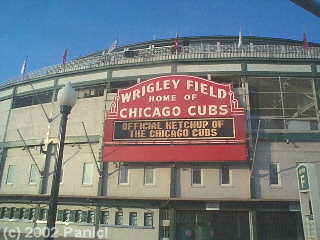
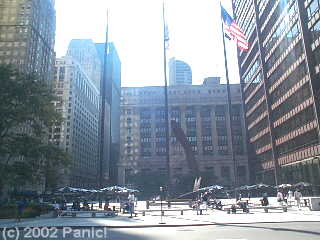
Saint
Louis.
Saint
Louis seemed to be an okay place. It had vibe, it hadnít quite lost it. I
got the feeling the place had seen some hard times, but not too hard. Saint
Louis had zing, spirit, life.
Houses
were nice, leafy tree lined roads, lawns, yards. There were little shopping
streets and supermarkets. You didnít have the sharply defined living areas
and shopping areas of LA. It was more like Chicago where there were shopping
streets mixed in with the suburbs so you didnít have to travel miles to go
shopping. I think that helps build community spirit, meeting the same people
at the shops helps you to get to know them a little better.
I
didnít see much of night life or public transport in Saint Louis, but I think
it had them. At the very least the city or state government seemed to be promoting
Saint Louis as a place to be, the ĎShow Meí State.
Gary
Indiana.
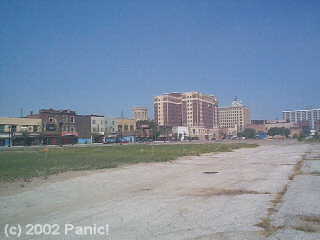 Gary
is a city where one should feel unsafe, but somehow I didnít. Thereís lots
of talk about the town. High unemployment, high crime rate, very few Caucasians.
It didnít escape me walking through the city that David and I were the only
dudes on the street who werenít African American. But nobody bothered us.
I hadnít expected they would. Though I figure a lot of people with narrow
minds would have expected trouble. David had once been escorted out of town
by cops who thought he was lost.
Gary
is a city where one should feel unsafe, but somehow I didnít. Thereís lots
of talk about the town. High unemployment, high crime rate, very few Caucasians.
It didnít escape me walking through the city that David and I were the only
dudes on the street who werenít African American. But nobody bothered us.
I hadnít expected they would. Though I figure a lot of people with narrow
minds would have expected trouble. David had once been escorted out of town
by cops who thought he was lost.
I
figured that sure there was a lot of unemployment and depression here, I mean
half the main street was either bulldozed, abandoned or boarded up. But even
in towns with bad economic depression people make do. People get along with
their neighbors, they form a sense of community. Probably more so than richer
suburbs where people just mind their business.
At
the same time, while Gary was okay to visit, I wouldnít want to live there.
Detroit.
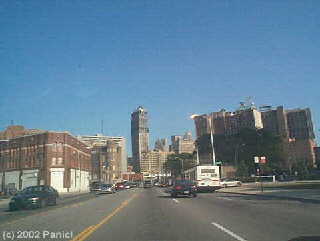 Detroit
was a lot like Gary. Lots of old abandoned buildings, kind of depressing really.
The place was a city that seemed to be missing itís heart. Too much decay,
too obvious too. Whole buildings downtown boarded up. The magic seemed to
be gone. Sure there was a big new stadium for their sports team, but the old
ballpark remained, with the spirit and magic still there. The new ballpark
had yet to prove itself and gain acceptance.
Detroit
was a lot like Gary. Lots of old abandoned buildings, kind of depressing really.
The place was a city that seemed to be missing itís heart. Too much decay,
too obvious too. Whole buildings downtown boarded up. The magic seemed to
be gone. Sure there was a big new stadium for their sports team, but the old
ballpark remained, with the spirit and magic still there. The new ballpark
had yet to prove itself and gain acceptance.
The
streets of Detroit tell the tale of the city. Worn, cracked, the old bricks
below showing in places. Grass growing in the cracks. There seemed no effort
to patch them up. It was like people had given up. The feeling I got from
Detroit was of a city on the edge of a long slide into oblivion. Unless they
did something quick, the city seemed to be in for some big problems.
Accommodation,
what I saw of it in Detroit was of low standard. There were a lot of board
ups. I passed many of them on the bus. Houses though did have yards and trees.
But many looked a little neglected. Public transport? I saw a tram line down
town but that was it. Not that I had much time to look.
Fort
Wayne.
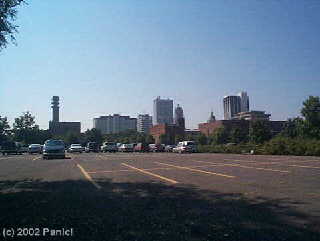 Fort
Wayne is a nice place. Itís not big. It doesnít have to be. It was about the
right size. The town seemed laid back, relaxed, low pressure. Despite there
recently being a particularly gruesome murder in town, you felt safe there.
Crime seemed to be something that belonged somewhere else although Iím sure
it happened. The big issues in town revolved around the proposed closing of
a small local airport and some guy who painted his garden rocks gold.
Fort
Wayne is a nice place. Itís not big. It doesnít have to be. It was about the
right size. The town seemed laid back, relaxed, low pressure. Despite there
recently being a particularly gruesome murder in town, you felt safe there.
Crime seemed to be something that belonged somewhere else although Iím sure
it happened. The big issues in town revolved around the proposed closing of
a small local airport and some guy who painted his garden rocks gold.
Fort
Wayne seemed to be a nice place to live. There were leafy green parks down
town. The river that ran through town was polluted, but it flowed okay. There
was a big campus of a university in town to give locals access to a good education.
Yet the city was big enough not to be a college town.
I
donít know what public transport was like there. I donít recall seeing any.
I did see bus stops though.
I
think I could easily live in Fort Wayne, though Iíd need to make the occasional
trip to larger cities for something to explore.
Cincinnati.
I
didnít really see enough of Cincinnati to form too much of an opinion of it.
We drove through depressed areas but they seemed okay. People lived primarily
in houses. Lawns looked unkempt but green. Public transport existed in the
form of busses. The city obviously took some pride in itself, building a new
football stadium and downtown transport hub. Not necessarily a place I would
like to live, but a place I could live if I had to.
State
College.
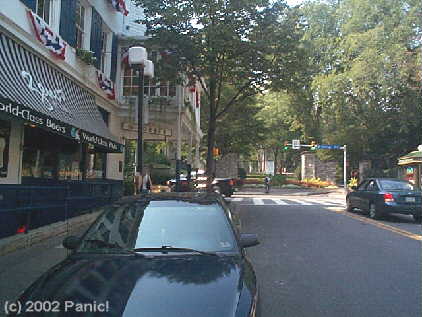 I
really liked State College. Triterus also indicated that on my wage I could
afford to live there, and live well. State College is not your normal town
or city. It is set up primarily to cater for the thousands of students who
attend Pennsylvania State University, at the heart of the town, both physically
and economically.
I
really liked State College. Triterus also indicated that on my wage I could
afford to live there, and live well. State College is not your normal town
or city. It is set up primarily to cater for the thousands of students who
attend Pennsylvania State University, at the heart of the town, both physically
and economically.
Though
you would not think it, State College is really quite crowded. The majority
of old homes have been converted into multi residential units, essentially
apartments. Some of these conversions have been done gracefully, but some
have been done badly, hooking modern external staircases to graceful old buildings.
Student occupation rates are so high there has been talk of bylaws to restrict
the number of unrelated people living in a single dwelling to three. I suggested
everyone just adopt everyone else. This could cause problems when getting
married though.
Public
transport in State College rocks. There are busses and lots of them. They
are frequent and the network is good. Patronage seemed high, they were packed.
Best still, the busses are free on campus and fares else where are affordable.
Likewise entertainment is good. There is lots to do for such a small town.
There are many restaurants and places to eat out. General shopping though
is done in supermarkets rather than corner stores, though you can shop down
town if you want to pay premium. The prices didnít seem too expensive to me.
Best still, you can get cable Internet. This is something I have not seen
in similar sized towns elsewhere.
Frankly,
State College struck me as being like a densely packed suburb of a larger
city. It had the facilities of larger cities, but in a small country town.
Washington.
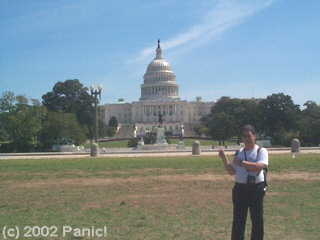 Once
again, I did not stay in Washington long. It was a bit unfriendly, a bit artificial.
It was kind of like Canberra in Australia. The culture and action seemed a
little like it was there for the tourists. Mind you this was before the sniper
problems.
Once
again, I did not stay in Washington long. It was a bit unfriendly, a bit artificial.
It was kind of like Canberra in Australia. The culture and action seemed a
little like it was there for the tourists. Mind you this was before the sniper
problems.
Downtown
seemed devoid of people even at 6pm. I had to walk over to Chinatown before
I started to see people on the street. Even during the day many of the shops
seemed near deserted. The only people around were in the office blocks or
tourists walking around. There was public transport, though I never used any
of it. Some locals I met said it was okay, clean and safe though a bit infrequent
at times.
Washington
is set up for the tourist, but some of the people employed to serve tourists
badly need lessons on customer relations. The staff at the youth hostel were
obviously in it for the money apart from one guy who tried to give good service
despite other staff discouraging him. The lady who checked me in didnít even
bother to say welcome. She was more interested in if I wanted to store my
bag for a dollar a night. Getting change for any note was a big task for her.
She seemed really inefficient, slack and down right rude. So were most of
the other staff.
It
didnít stop there either. Donít bother even buying food from the official
food vending carts. Itís over priced, poor quality and the service is bad.
One vendor asked me to wait a few minutes while they wiped down their already
spotless metal surfaced cart. Another told me their cash register was rebooting
and also asked me to come back in a few minutes. Finally arriving at a functioning
vendor I asked how much a drink would cost. The woman serving was engaged
in a conversation with her co-worker, she barely even looked at me and said
"Thatíll be three dollars fifty." And held out her hand, not even looking
at me as she carried on her conversation. Despite the price being a total
rip off, she was just plain rude.
The
licensed but non tourist authority vendors on the other hand were cheaper,
for better value for money, far more polite and more enthusiastic than the
official city ones. These people were characters. They had life in them. This
wasnít just a job to them, it was how they earned a living. They put their
heart into it. Unfortunately they were often forced to put up with second
rate vending locations, out the back of attractions instead of out front.
It was worth looking around for them because you got better food, paid less
and got real service.
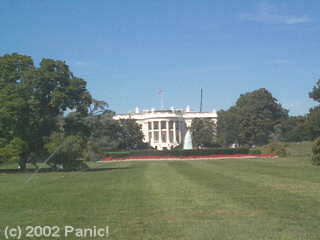
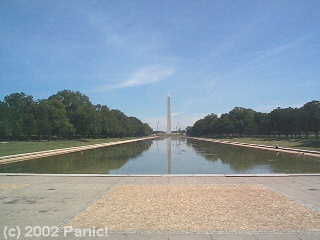
Blacksburg.
Though
a college dominated town, Blacksburg wasnít as geared up to college students
as State College was. It seemed to be a town in itís own right. The college
could go and the town would suffer, but it wouldnít die.
There
were the shops and restaurants to cater for students, but they were more spread
out. There didnít seem to be a Ďmain streetí shopping center like State College.
Instead there was a sort of mini mall supermarket like regular USA suburbia.
There were busses, but not as many and not as frequent as State College. Blacksburg
seemed a little more laid back than State College.
New
York.
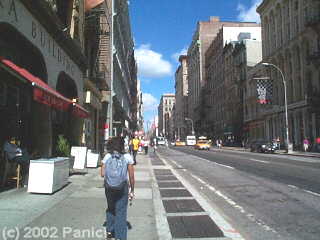 Now
hereís a Mega-City. New York, New York. I only got to see a small part of
this metropolis that houses millions. There are more people in Greater New
York than there are in the whole of Australia. I think thatís even without
New Jerseyís Newark population included, though I may be wrong.
Now
hereís a Mega-City. New York, New York. I only got to see a small part of
this metropolis that houses millions. There are more people in Greater New
York than there are in the whole of Australia. I think thatís even without
New Jerseyís Newark population included, though I may be wrong.
New
York is a place that rocks, it rolls, itís got vibe, itís got action it just
about buzzes with activity. It has to in order to meet the needs of the masses
of people that live there. New York is a city that handles the population
problem well. Despite a huge population density there is green, there is room
for two quite sizable parks, Riverside and Central Park. The smaller parks
like Washington Square park serve the needs of many, and are almost compartmentalized
in how small areas are set aside for different functions.
Public
transport in New York fairly buzzes along. New York, London and Paris are
each examples of Mega Cities that rely on their underground railways to move
millions of people each day. By and large these subways work well and do the
job. In each of these three Mega Cities busses are integrated with the subways,
and integrated well. Only in cities with such organised public transport is
it possible to get from almost anywhere in the city to almost anywhere else
in the city within an hour and a halfís time, even including walking, waiting
and transfer times.
New
York is of course crowded. Despite that, I could probably live there if I
had to and be reasonably happy. Provided I got a place in a side street in
a reasonable neighborhood. I could not afford to live there though. It is
expensive. The crowding and crime rate do worry me as well. It would not be
a place I would choose to live.
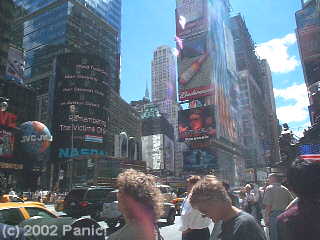
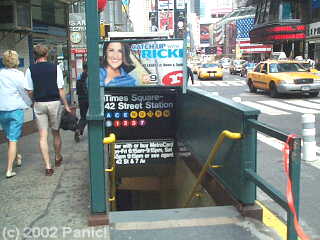
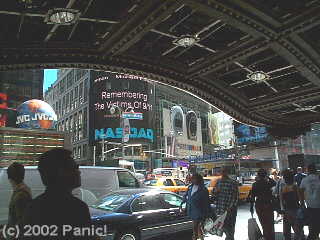
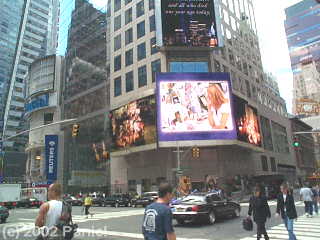
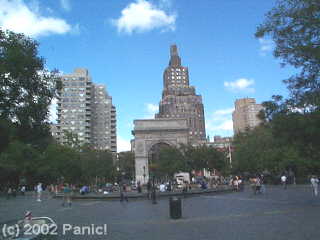
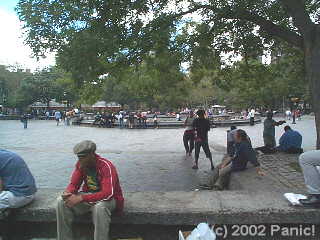
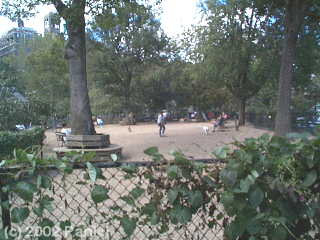
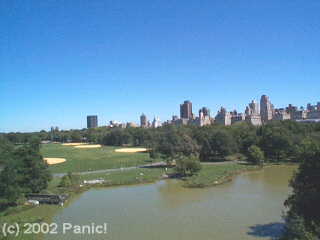
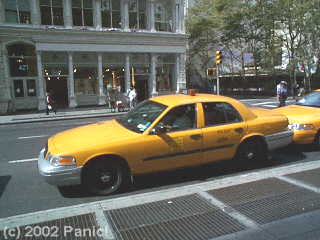
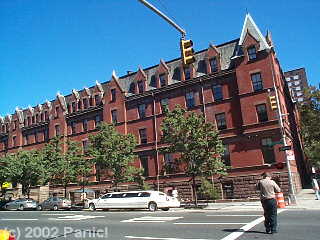
Toronto.
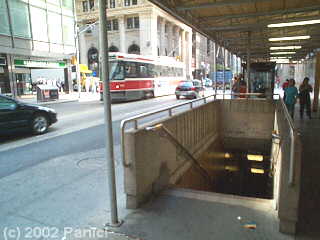 Toronto
reminded me a lot of Melbourne, and not just for the trams. It was a friendly
place, multicultural, open. Some things struck me about Toronto. The first
was the many notices on street poles, bus shelters and street planters warning
that they were private property and notices etc. attached to them would be
prosecuted. This seemed to work. I saw only two stickers posted on these poles
in the whole city. Other street furniture without notices such as newspaper
stands were covered in stickers.
Toronto
reminded me a lot of Melbourne, and not just for the trams. It was a friendly
place, multicultural, open. Some things struck me about Toronto. The first
was the many notices on street poles, bus shelters and street planters warning
that they were private property and notices etc. attached to them would be
prosecuted. This seemed to work. I saw only two stickers posted on these poles
in the whole city. Other street furniture without notices such as newspaper
stands were covered in stickers.
The
other thing I noticed were the number of middle aged women beggars. These
werenít obviously immigrants either. Seemingly local women down on their luck.
I had seen beggars elsewhere, but these were men. Toronto was the first place
I had seen women beggars. Paris, Rome, Naples and Glasgow also seemed to have
many beggars. In Paris and Rome the beggars were predominately women with
children. They looked to be gypsies, unable to gain social security benefit.
In Paris one beggar who was missing both hands made no bones of his request,
entering a metro train and standing in front of the obvious tourists till
they gave him money to go away. In Glasgow young unemployed men begged for
money. According to the social services these people often make more money
from begging than they get from unemployment benefits. They are said to make
a comfortable living through begging. I have always been soft hearted though
and gave many dollars, Euros and pounds over my holiday to beggars. I know
what itís like to be poor. The beggars in Rome got little sympathy from me
however. Some mothers would deliberately shake their children to make them
cry. Others were dressed wearing good clothing and Nike shoes. More than once
I saw women slap children when they thought no one was watching to make the
children cry louder.
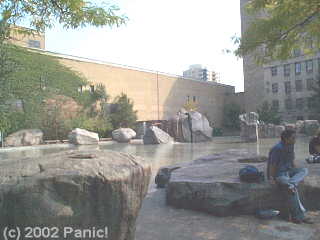
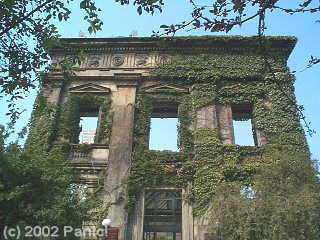
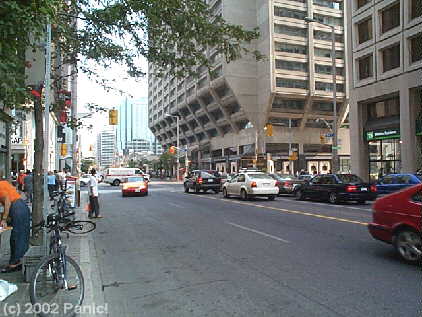
London
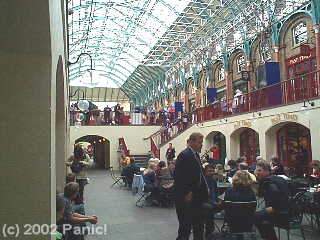 London
we great! I love that old city. The place has life in it, a vibrancy and buzz
that many modern cities just don't have. London seems to be a city where something
is always happening. Having flown over it in the day is something, but it
is not till you fly over it at night that you realise how huge it really is.
The lights of London at night stretch for miles and miles, right to the edge
of the Thames estuary. London truly is a massive metropolis, a Mega City in
it's own right.
London
we great! I love that old city. The place has life in it, a vibrancy and buzz
that many modern cities just don't have. London seems to be a city where something
is always happening. Having flown over it in the day is something, but it
is not till you fly over it at night that you realise how huge it really is.
The lights of London at night stretch for miles and miles, right to the edge
of the Thames estuary. London truly is a massive metropolis, a Mega City in
it's own right.
London
is a city with history and traditions that go back for hundreds of years.
This seems to give the city a very unique character. Everywhere you look you
can see history in the buildings, ornate stonework and wrought iron. Then
there are the English themselves. A very diverse people. From 'traditional'
Anglo Saxons to people from all parts of the Commonwealth. Even within those
groups I found a hugely diverse range of people. I liked the punks and hippies
I encountered along the Embankment in the center of London. There was also
the prim and proper English gentlemen riding the Tube.
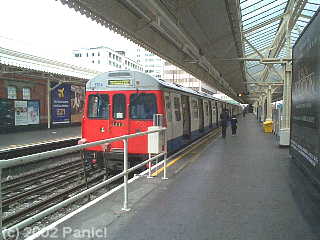
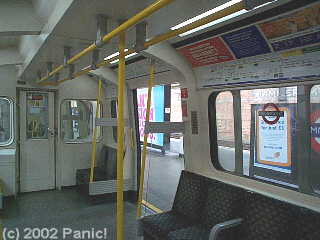

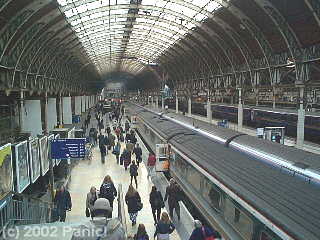
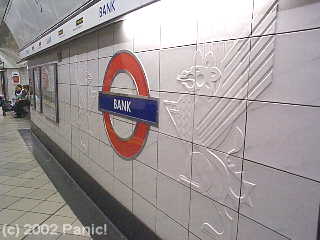
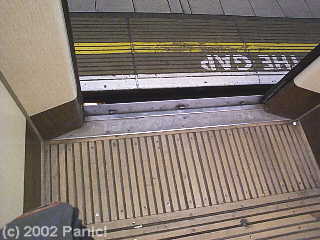
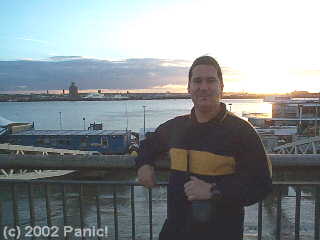 Liverpool
Liverpool
Liverpool
was one of the nicest and most friendly places I visited on the entire trip.
I loved Liverpool. All of the people I met were very friendly. This wasn't
just the people I was there to meet but also the youth hostel staff, the cabbie
who drove me to the bus station and the people in the bus station itself.
I expect
that Liverpool is geared up for tourism seeing as how it has a massive Beatles
influence. Even with that, the friendliness and hospitality of the city left
a lasting impression on me.
.
Glasgow
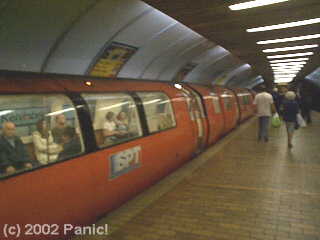 Now
Glasgow is a city with history, culture and friendly people as well. It was
a vibrant and bubbling place. The city has plenty of character. Lots of history
there too. If it stayed warm all year round I would be happy to live there.
It was a vibrant bustling city. There were plenty of people on the streets
even in the short walk from the bus depot down to Buchanan Street underground
station.
Now
Glasgow is a city with history, culture and friendly people as well. It was
a vibrant and bubbling place. The city has plenty of character. Lots of history
there too. If it stayed warm all year round I would be happy to live there.
It was a vibrant bustling city. There were plenty of people on the streets
even in the short walk from the bus depot down to Buchanan Street underground
station.
I wasn't
in Glasgow long, but long enough to see the city had a large industrial past,
lots of historical buildings with character and despite past problems with
unemployment the city seems to be on it's feet and doing well. I really liked
Glasgow.
.
.
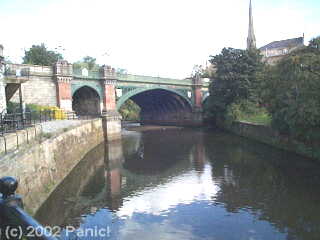
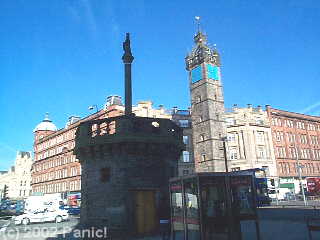
Rotterdam
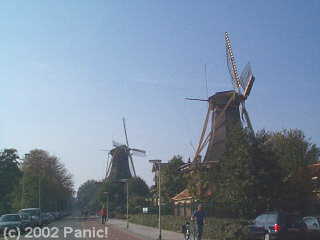 Rotterdam
was a wonderful city. It seemed to be a city that was mostly low density,
with a city center and large industrial areas around the port. I saw little
signs of decay in Rotterdam. Admittedly I did only spend a day riding around,
and a couple of drives out of the city but I did see a bit of it. It seems
that space is at such a premium in the Netherlands that as soon as some becomes
available, it is cleared for something new to take it's place.
Rotterdam
was a wonderful city. It seemed to be a city that was mostly low density,
with a city center and large industrial areas around the port. I saw little
signs of decay in Rotterdam. Admittedly I did only spend a day riding around,
and a couple of drives out of the city but I did see a bit of it. It seems
that space is at such a premium in the Netherlands that as soon as some becomes
available, it is cleared for something new to take it's place.
Rotterdam
is a green and leafy place. There are lots of trees there, even some growing
on converted canal boats used as houses. While many streets featured wall
to wall houses, some were set back from the street with front yards. Naturally
Rotterdam is a city with lots of water features. Not only are there many navigable
canals for boats, but there are also quiet placid canals for drainage. These
are more like long formal ponds, with grass growing right to their edges and
sort of slates or roofing tiles holding up the edges of these ponds. I call
them ponds more than canals because instead of having bridges under roads
they have pipes under water level giving them the appearance of being many
separate ponds instead of a joined system.
Public
transport in Rotterdam has three systems that work in unison. There is the
trains on the railway network, underground in the city and above ground in
the suburbs. There is just two lines at the moment. Trams run around the inner
city of Rotterdam. These are multiple unit articulated trams. Finally busses
spread out from any railway stations. This is very similar to the network
in Rome, but for some reason the transport in Rotterdam seems so much more
efficient and less crowded than in
Rome.
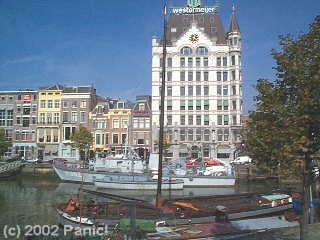
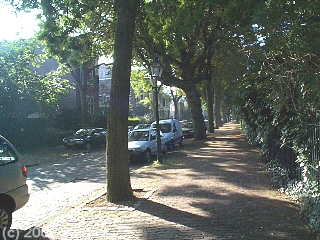
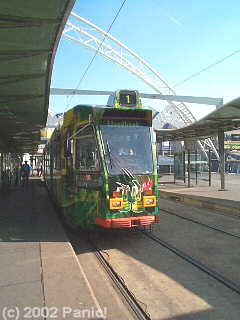
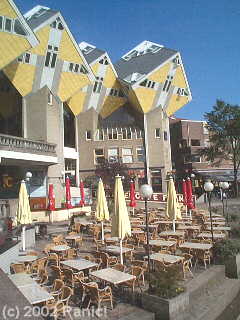
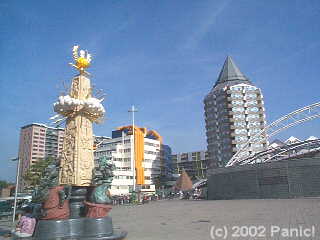
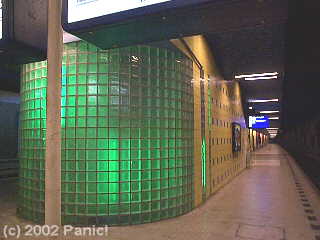

Paris
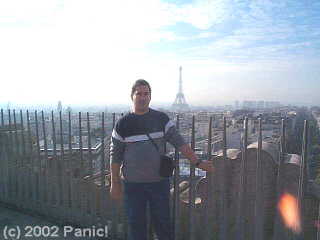 Paris
really is a most amazing city. Very crowded, with bad air pollution but with
stunning history and an amazing culturally rich people. I met some of the
most genuine, straight forward and down to Earth people in Paris. My guide
there Stonga, and I talked a lot about a lot of things, including French culture.
While Stonga mentioned he thought the French were arrogant (he is French himself)
I did not notice any of that. Every French person I met was polite, kind and
helpful. My grasp of French is poor even after reading a phrase book and listening
to tapes. But I could pick out many words and get the gist of things. I was
also able to make myself understood. Many people did speak some English, particularly
in rail stations, but most preferred not to speak it. This is perfectly understandable,
how many of us English speakers bother to learn another language to help out
tourists?
Paris
really is a most amazing city. Very crowded, with bad air pollution but with
stunning history and an amazing culturally rich people. I met some of the
most genuine, straight forward and down to Earth people in Paris. My guide
there Stonga, and I talked a lot about a lot of things, including French culture.
While Stonga mentioned he thought the French were arrogant (he is French himself)
I did not notice any of that. Every French person I met was polite, kind and
helpful. My grasp of French is poor even after reading a phrase book and listening
to tapes. But I could pick out many words and get the gist of things. I was
also able to make myself understood. Many people did speak some English, particularly
in rail stations, but most preferred not to speak it. This is perfectly understandable,
how many of us English speakers bother to learn another language to help out
tourists?
I
was particularly charmed to meet an old man in the south of Paris while I
was looking at a map to decide which of two parks to explore. He walked up
to me and asked if I was lost in French. I replied that I was not lost. He
switched to English and asked; "In English perhaps? Where do you want
to go?" I replied that I was deciding which park to explore, and thanked
him for his help. "You are English?" He asked. "No" I
replied, "Australian."
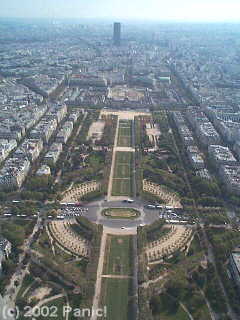 The
old man looked at me and his whole body seemed to change, he smiled and patted
me on the shoulder. "Ahh, I remember the Australians! I fought with them
in the last war against the Allemande (Germans). They were the bravest people
I ever saw. Here, you go down the road, you see my friends down there, have
something to eat, I will show you the park myself." I spent a few hours
talking with the old man, finding out he knew people from where I lived and
learning a lot about the history of Paris since world war 2.
The
old man looked at me and his whole body seemed to change, he smiled and patted
me on the shoulder. "Ahh, I remember the Australians! I fought with them
in the last war against the Allemande (Germans). They were the bravest people
I ever saw. Here, you go down the road, you see my friends down there, have
something to eat, I will show you the park myself." I spent a few hours
talking with the old man, finding out he knew people from where I lived and
learning a lot about the history of Paris since world war 2.
I
have to admire the French for their patience and decorum in putting up with
tourists. The city swarms with tourists. I tried to avoid seeing too much
touristy stuff but saw the Eiffel Tower and Arc De Triumph. This was mainly
to use them as vantage points for photography. Tourism must surely affect
the culture of a city even as large as Paris. Some people's lives revolve
around the tourists, others would prefer not to know them. I have to say the
number of middle aged American tourists was annoying. They were all over the
place, expected everyone to know English and were frankly rude when they encountered
people who did not know English. There were also many college aged young Americans
in Paris, for their summer vacation. Having met many people this age and knowing
them to be nice and genuine people I expect the ones I met were rich and spoilt
as they were also quite ruse and obnoxious.
In
a funny incident one asked me; "Excuse me. Par-lay-voo En-glace?"
I was wearing a T-shirt saying 'Otico Magazine' but I guess they mistook me
for a local. So I decided to play a trick. "A little." I replied
in a bogus French accent, probably poorly done. "Where is the station?
The Metro?" Asked a middle aged woman in a terrible yokel accent. I guess
from my stunned look she thought I did not understand so she started speaking
slowly, like real slow like you speak to people when they're stupid. "See
that sign behind you? The one that say's 'Metro'? That's the station."
I said in my normal voice. They had been standing right in front of it. I
think they realized how stupid they were and walked off.
Oh,
and did I mention the dog poo on the streets of Paris?
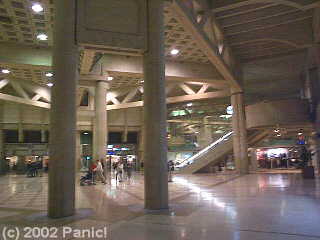
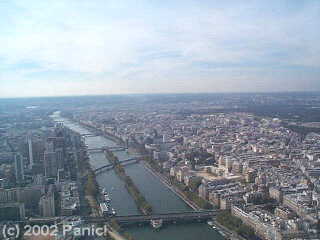
Rome
Rome,
itís an amazing city. A mixture of the old and the new. There are lots of
monuments there, some surprisingly old. One of these monuments I saw was a
pyramid, built in 81 BC, thatís over 2000 years old. But it was finished in
smooth stone, and could have been built just a few decades ago by the look
of it.
I visited
the coliseum where immigrant men trying to make a living sold me a toy bubble
gun. This device blows bubbles, as the name implies. It was a lot of fun.
I blew bubbles at the coliseum, at the Spanish steps, at the Trevi fountain,
on the train, in busses, at the breakfast table, in the Vatican while the
Pope was blessing the crowd, but not in the Sistine chapel as I haddnít brought
it then. It was my favorite souvenir of the trip.
One important
thing about traffic in Rome is that drivers often ignore zebra crossings.
I saw several tourists step off the road at zebra crossings only to jump back
as they were almost run over by cars. A zebra crossing is simply a place you
can cross, not necessarily a place where cars will stop for you. Even if here
is a gap in the traffic, be cautious. I observed three car accidents in Rome,
one a head on from a car driving down the wrong side of a road. And scooters
and motor cycles of all types dart in and out of the traffic.
Rome also
had lots of parks and open space for people to relax in. The river seems to
be a relatively under utilized area, with walkways beside the water, but little
access to them.
Eating
in Rome seemed to be quite expensive. I was originally eating food at the
youth hostel but the food was so bad I started to look elsewhere. Most places
seemed to be a bit on the steep side (more so once I realized what the exchange
rate was) but another Aussie I was hanging out with found a great little shop
down near Ottaviano station just off the south side of Via Julia Caesar (Viale
Giulia Cesare) probably on the corner with Via Santa Maura, which is three
streets west of the station. They sold traditional Italian pizzas starting
at about 4 Euro. Another good buy was the mini pizzas in the snack vendor
just across the road from the youth hostel. It wasnít always open but the
food was much better value than the youth hostel and much tastier.
As far
as youth hostels go, Rome was the worst, followed closely by Washington, and
then Toronto. Liverpool was by far the best, followed by New York then Glasgow.
The fact that you could not lock your rooms was a big downer for Rome, as
was the lousy food, mosquitos, the dodgy money stealing lock machine, cold
(as in no hot water most days) and not very private showers and the less than
polite staff.
One of
the things I loved about Rome was the advertising. In Australia posters of
scantily clad women advertising things would get news coverage and would be
vandalized by women's movements. In Rome they were all over the place. Billboard
after billboard seemed to be covered in women in their underwear advertising
all sorts of things from women's underwear (it would seem obvious) to weight
watching programs and milk. I asked a woman from the hostel what she thought
of them, expecting that she would be angry at them. Instead she said; "They're
so stupid. I saw this add for a bra and I can't find it anywhere. I have been
looking for two days and not one shop sells that brand. What a waste of advertising!"
That's Rome for you.
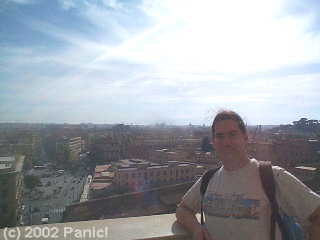
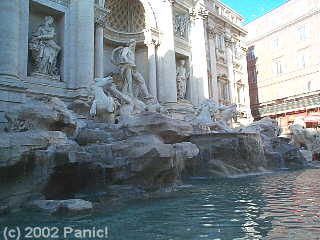
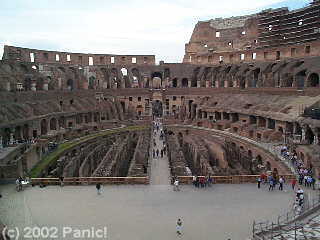
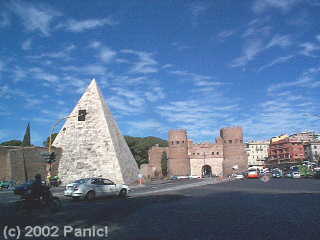
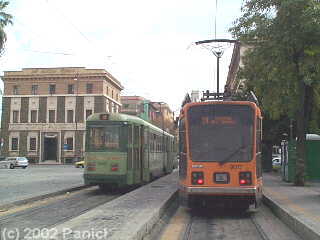
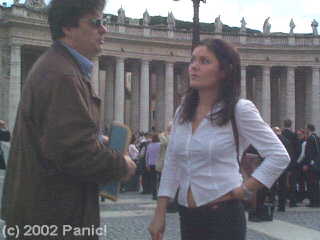
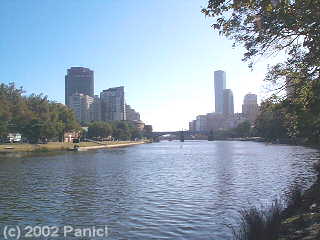 According
to some statistics,
the city I was raised in, Melbourne Australia, has a population of around
3,336,542 people.
According
to some statistics,
the city I was raised in, Melbourne Australia, has a population of around
3,336,542 people. 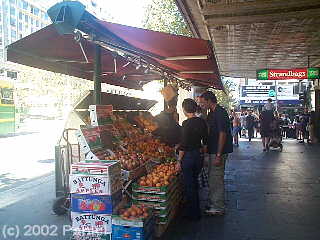 The
multicultural aspect of the city is another big bonus. You can eat food from
any place in the world here, you can experience other cultures. You can mix
with people who share your own culture as well as having a background in others.
Though there is a problem with racism, it tends to be due to a small number
of recalcitrant idiots rather than the general population. Being Indigenous
and knowing people from many cultures we all agree there's still work o be
done but the harassment and discrimination we face is really minor compared
to what people in other countries face. Education is a key to that, the more
educated people are, the less narrow minded they appear to be.
The
multicultural aspect of the city is another big bonus. You can eat food from
any place in the world here, you can experience other cultures. You can mix
with people who share your own culture as well as having a background in others.
Though there is a problem with racism, it tends to be due to a small number
of recalcitrant idiots rather than the general population. Being Indigenous
and knowing people from many cultures we all agree there's still work o be
done but the harassment and discrimination we face is really minor compared
to what people in other countries face. Education is a key to that, the more
educated people are, the less narrow minded they appear to be.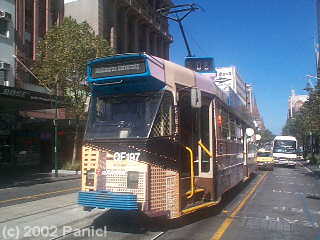 I
am sure that there are all sorts of facts and figures floating about around
there on population density of countries.
I
am sure that there are all sorts of facts and figures floating about around
there on population density of countries. 

 I
think another big factor is access to parks, and greenery. Life in a concrete
jungle can be a bit oppressive. While New York obviously has many more people
than Los Angeles, and a
I
think another big factor is access to parks, and greenery. Life in a concrete
jungle can be a bit oppressive. While New York obviously has many more people
than Los Angeles, and a  I
also found the predomination of concrete in some cities to be a factor in
how happy I felt there. Los Angeles is covered in small concrete and brick
lowrise apartments. These things are purely functional in design. There's
no attempt to make them look attractive. You can tell these things have been
built to a budget, with he aim of producing the greatest amount of housing
for the smallest amount of payment. The bricks for some reason tend to be
light shades of gray, like concrete. Gray and light pale yellow seem to be
the predominant colors.
I
also found the predomination of concrete in some cities to be a factor in
how happy I felt there. Los Angeles is covered in small concrete and brick
lowrise apartments. These things are purely functional in design. There's
no attempt to make them look attractive. You can tell these things have been
built to a budget, with he aim of producing the greatest amount of housing
for the smallest amount of payment. The bricks for some reason tend to be
light shades of gray, like concrete. Gray and light pale yellow seem to be
the predominant colors. Weather
you are a tourist or a local, getting around is important. Transport for the
masses falls into either private or public transport. Every city of over half
a million needs public transport. This not only caters for local needs, but
also for people visiting the city who do not have their own private transport.
Some cities handle public transport better than others. London, Paris, New
York and Melbourne all have excellent public transport systems. Even small
towns like State College in Pennsylvania can have good public transport. Then
there are cities that struggle with public transport systems that are too
small, overcrowded or non existent. Thankfully for me, there are also cities
that build big public transport systems but can't afford to implement them
and leave them abandoned. Charleroi and Cincinnati both are good examples.
Weather
you are a tourist or a local, getting around is important. Transport for the
masses falls into either private or public transport. Every city of over half
a million needs public transport. This not only caters for local needs, but
also for people visiting the city who do not have their own private transport.
Some cities handle public transport better than others. London, Paris, New
York and Melbourne all have excellent public transport systems. Even small
towns like State College in Pennsylvania can have good public transport. Then
there are cities that struggle with public transport systems that are too
small, overcrowded or non existent. Thankfully for me, there are also cities
that build big public transport systems but can't afford to implement them
and leave them abandoned. Charleroi and Cincinnati both are good examples.
 .
. Cultureshock.
Things that were
different and weird overseas but not all that unusual.
Cultureshock.
Things that were
different and weird overseas but not all that unusual. Los
Angeles is not a city I think Iíd want to live in. My overall opinion of Los
Angeles is that it is a little too dry, too crowded and not enough green.
The city is a city of contrasts. Thereís the seedier suburbs of Hawthorne,
Watts and Inglewood, and the up-market areas like Beverly Hills and Santa
Monica.
Los
Angeles is not a city I think Iíd want to live in. My overall opinion of Los
Angeles is that it is a little too dry, too crowded and not enough green.
The city is a city of contrasts. Thereís the seedier suburbs of Hawthorne,
Watts and Inglewood, and the up-market areas like Beverly Hills and Santa
Monica.

 This
is a city I could easily live in. So green, so alive, so vibrant. Easy to
get around in, with excellent public transport, Chicago has buzz!
This
is a city I could easily live in. So green, so alive, so vibrant. Easy to
get around in, with excellent public transport, Chicago has buzz! Public
transport in Chicago was good. While there wasnít a massive rail network,
it was large, frequent, clean and felt safe. Busses served areas where trains
were lacking. At the end of lines there were good bus and train interchanges.
There were express trains that bypasses local ones. It was all fast and efficient.
For a tourist it was easy to get around.
Public
transport in Chicago was good. While there wasnít a massive rail network,
it was large, frequent, clean and felt safe. Busses served areas where trains
were lacking. At the end of lines there were good bus and train interchanges.
There were express trains that bypasses local ones. It was all fast and efficient.
For a tourist it was easy to get around.

 Gary
is a city where one should feel unsafe, but somehow I didnít. Thereís lots
of talk about the town. High unemployment, high crime rate, very few Caucasians.
It didnít escape me walking through the city that David and I were the only
dudes on the street who werenít African American. But nobody bothered us.
I hadnít expected they would. Though I figure a lot of people with narrow
minds would have expected trouble. David had once been escorted out of town
by cops who thought he was lost.
Gary
is a city where one should feel unsafe, but somehow I didnít. Thereís lots
of talk about the town. High unemployment, high crime rate, very few Caucasians.
It didnít escape me walking through the city that David and I were the only
dudes on the street who werenít African American. But nobody bothered us.
I hadnít expected they would. Though I figure a lot of people with narrow
minds would have expected trouble. David had once been escorted out of town
by cops who thought he was lost. Detroit
was a lot like Gary. Lots of old abandoned buildings, kind of depressing really.
The place was a city that seemed to be missing itís heart. Too much decay,
too obvious too. Whole buildings downtown boarded up. The magic seemed to
be gone. Sure there was a big new stadium for their sports team, but the old
ballpark remained, with the spirit and magic still there. The new ballpark
had yet to prove itself and gain acceptance.
Detroit
was a lot like Gary. Lots of old abandoned buildings, kind of depressing really.
The place was a city that seemed to be missing itís heart. Too much decay,
too obvious too. Whole buildings downtown boarded up. The magic seemed to
be gone. Sure there was a big new stadium for their sports team, but the old
ballpark remained, with the spirit and magic still there. The new ballpark
had yet to prove itself and gain acceptance. Fort
Wayne is a nice place. Itís not big. It doesnít have to be. It was about the
right size. The town seemed laid back, relaxed, low pressure. Despite there
recently being a particularly gruesome murder in town, you felt safe there.
Crime seemed to be something that belonged somewhere else although Iím sure
it happened. The big issues in town revolved around the proposed closing of
a small local airport and some guy who painted his garden rocks gold.
Fort
Wayne is a nice place. Itís not big. It doesnít have to be. It was about the
right size. The town seemed laid back, relaxed, low pressure. Despite there
recently being a particularly gruesome murder in town, you felt safe there.
Crime seemed to be something that belonged somewhere else although Iím sure
it happened. The big issues in town revolved around the proposed closing of
a small local airport and some guy who painted his garden rocks gold. I
really liked State College. Triterus also indicated that on my wage I could
afford to live there, and live well. State College is not your normal town
or city. It is set up primarily to cater for the thousands of students who
attend Pennsylvania State University, at the heart of the town, both physically
and economically.
I
really liked State College. Triterus also indicated that on my wage I could
afford to live there, and live well. State College is not your normal town
or city. It is set up primarily to cater for the thousands of students who
attend Pennsylvania State University, at the heart of the town, both physically
and economically. Once
again, I did not stay in Washington long. It was a bit unfriendly, a bit artificial.
It was kind of like Canberra in Australia. The culture and action seemed a
little like it was there for the tourists. Mind you this was before the sniper
problems.
Once
again, I did not stay in Washington long. It was a bit unfriendly, a bit artificial.
It was kind of like Canberra in Australia. The culture and action seemed a
little like it was there for the tourists. Mind you this was before the sniper
problems.

 Now
hereís a Mega-City. New York, New York. I only got to see a small part of
this metropolis that houses millions. There are more people in Greater New
York than there are in the whole of Australia. I think thatís even without
New Jerseyís Newark population included, though I may be wrong.
Now
hereís a Mega-City. New York, New York. I only got to see a small part of
this metropolis that houses millions. There are more people in Greater New
York than there are in the whole of Australia. I think thatís even without
New Jerseyís Newark population included, though I may be wrong.









 Toronto
reminded me a lot of Melbourne, and not just for the trams. It was a friendly
place, multicultural, open. Some things struck me about Toronto. The first
was the many notices on street poles, bus shelters and street planters warning
that they were private property and notices etc. attached to them would be
prosecuted. This seemed to work. I saw only two stickers posted on these poles
in the whole city. Other street furniture without notices such as newspaper
stands were covered in stickers.
Toronto
reminded me a lot of Melbourne, and not just for the trams. It was a friendly
place, multicultural, open. Some things struck me about Toronto. The first
was the many notices on street poles, bus shelters and street planters warning
that they were private property and notices etc. attached to them would be
prosecuted. This seemed to work. I saw only two stickers posted on these poles
in the whole city. Other street furniture without notices such as newspaper
stands were covered in stickers.


 London
we great! I love that old city. The place has life in it, a vibrancy and buzz
that many modern cities just don't have. London seems to be a city where something
is always happening. Having flown over it in the day is something, but it
is not till you fly over it at night that you realise how huge it really is.
The lights of London at night stretch for miles and miles, right to the edge
of the Thames estuary. London truly is a massive metropolis, a Mega City in
it's own right.
London
we great! I love that old city. The place has life in it, a vibrancy and buzz
that many modern cities just don't have. London seems to be a city where something
is always happening. Having flown over it in the day is something, but it
is not till you fly over it at night that you realise how huge it really is.
The lights of London at night stretch for miles and miles, right to the edge
of the Thames estuary. London truly is a massive metropolis, a Mega City in
it's own right.





 Liverpool
Liverpool Now
Glasgow is a city with history, culture and friendly people as well. It was
a vibrant and bubbling place. The city has plenty of character. Lots of history
there too. If it stayed warm all year round I would be happy to live there.
It was a vibrant bustling city. There were plenty of people on the streets
even in the short walk from the bus depot down to Buchanan Street underground
station.
Now
Glasgow is a city with history, culture and friendly people as well. It was
a vibrant and bubbling place. The city has plenty of character. Lots of history
there too. If it stayed warm all year round I would be happy to live there.
It was a vibrant bustling city. There were plenty of people on the streets
even in the short walk from the bus depot down to Buchanan Street underground
station.

 Rotterdam
was a wonderful city. It seemed to be a city that was mostly low density,
with a city center and large industrial areas around the port. I saw little
signs of decay in Rotterdam. Admittedly I did only spend a day riding around,
and a couple of drives out of the city but I did see a bit of it. It seems
that space is at such a premium in the Netherlands that as soon as some becomes
available, it is cleared for something new to take it's place.
Rotterdam
was a wonderful city. It seemed to be a city that was mostly low density,
with a city center and large industrial areas around the port. I saw little
signs of decay in Rotterdam. Admittedly I did only spend a day riding around,
and a couple of drives out of the city but I did see a bit of it. It seems
that space is at such a premium in the Netherlands that as soon as some becomes
available, it is cleared for something new to take it's place.






 Paris
really is a most amazing city. Very crowded, with bad air pollution but with
stunning history and an amazing culturally rich people. I met some of the
most genuine, straight forward and down to Earth people in Paris. My guide
there Stonga, and I talked a lot about a lot of things, including French culture.
While Stonga mentioned he thought the French were arrogant (he is French himself)
I did not notice any of that. Every French person I met was polite, kind and
helpful. My grasp of French is poor even after reading a phrase book and listening
to tapes. But I could pick out many words and get the gist of things. I was
also able to make myself understood. Many people did speak some English, particularly
in rail stations, but most preferred not to speak it. This is perfectly understandable,
how many of us English speakers bother to learn another language to help out
tourists?
Paris
really is a most amazing city. Very crowded, with bad air pollution but with
stunning history and an amazing culturally rich people. I met some of the
most genuine, straight forward and down to Earth people in Paris. My guide
there Stonga, and I talked a lot about a lot of things, including French culture.
While Stonga mentioned he thought the French were arrogant (he is French himself)
I did not notice any of that. Every French person I met was polite, kind and
helpful. My grasp of French is poor even after reading a phrase book and listening
to tapes. But I could pick out many words and get the gist of things. I was
also able to make myself understood. Many people did speak some English, particularly
in rail stations, but most preferred not to speak it. This is perfectly understandable,
how many of us English speakers bother to learn another language to help out
tourists? The
old man looked at me and his whole body seemed to change, he smiled and patted
me on the shoulder. "Ahh, I remember the Australians! I fought with them
in the last war against the Allemande (Germans). They were the bravest people
I ever saw. Here, you go down the road, you see my friends down there, have
something to eat, I will show you the park myself." I spent a few hours
talking with the old man, finding out he knew people from where I lived and
learning a lot about the history of Paris since world war 2.
The
old man looked at me and his whole body seemed to change, he smiled and patted
me on the shoulder. "Ahh, I remember the Australians! I fought with them
in the last war against the Allemande (Germans). They were the bravest people
I ever saw. Here, you go down the road, you see my friends down there, have
something to eat, I will show you the park myself." I spent a few hours
talking with the old man, finding out he knew people from where I lived and
learning a lot about the history of Paris since world war 2.







